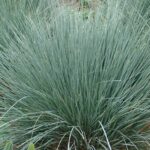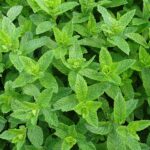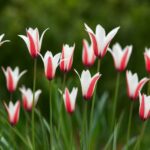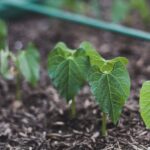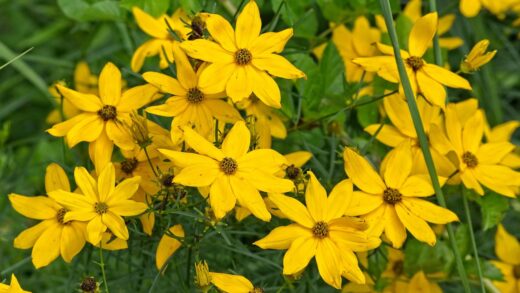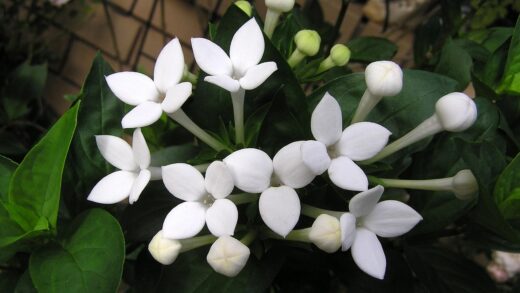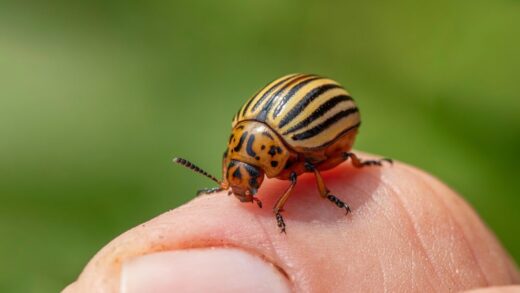One of the most appealing qualities of globe amaranth for any gardener is its remarkable resilience and general freedom from significant pest and disease issues. This robust annual seems to be unappetizing to most common garden insects and is not susceptible to the wide array of fungal and bacterial diseases that can plague more delicate plants. This natural hardiness makes it an ideal choice for low-maintenance landscapes and for those who practice organic gardening principles, as it rarely requires chemical interventions to stay healthy. However, no plant is completely immune, and understanding the few potential problems that can arise is key to preventing them and ensuring a season of trouble-free beauty.
The vast majority of problems encountered with globe amaranth are not caused by pests or pathogens but by cultural practices, specifically those related to soil and water. The plant’s primary vulnerability is to root rot, a condition caused by various soil-borne fungi that thrive in anaerobic, waterlogged conditions. This is almost always a result of planting in heavy, poorly draining soil or from excessive watering. Therefore, the most effective disease management strategy is prevention, focusing on providing the plant with the well-drained environment it craves from the very beginning.
When it comes to insect pests, globe amaranth is rarely a primary target. Common culprits like aphids, spider mites, and Japanese beetles tend to leave it alone in favor of more palatable plants in the garden. This resistance means that gardeners can typically enjoy a full season of perfect, unblemished blooms and foliage without ever having to worry about spraying insecticides. The plant’s tough, slightly hairy leaves and papery flowers may be a contributing factor to its lack of appeal for many chewing and sucking insects.
While the plant is generally self-sufficient in fending off problems, maintaining good garden hygiene and providing optimal growing conditions will further bolster its natural defenses. Ensuring good air circulation through proper spacing, watering at the base of the plant to keep foliage dry, and promptly removing any weeds or debris can help to prevent the rare instances of fungal leaf spots or other minor issues. By and large, the story of globe amaranth and its health is a positive one, centered more on providing the right environment than on battling specific afflictions.
Fungal and root diseases
The most significant threat to the health of globe amaranth is, without a doubt, root rot. This is not a single disease but rather a general term for the decay of a plant’s root system, typically caused by fungal pathogens such as Pythium, Phytophthora, or Rhizoctonia. These fungi are present in most soils but only become problematic when the soil is saturated with water for prolonged periods. The excess water depletes the oxygen in the soil, stressing the roots and creating a perfect breeding ground for these water-loving fungi to attack and destroy the root tissue.
More articles on this topic
The symptoms of root rot above ground can be misleading, often appearing as if the plant is thirsty. An affected plant will wilt, its leaves may turn yellow or brown, and its growth will be stunted. The key difference is that a plant with root rot will wilt even when the soil is moist. If you were to gently remove the plant from the soil, the roots would appear brown, mushy, and decayed, rather than the firm, white roots of a healthy plant. Unfortunately, once root rot has taken hold, it is very difficult, if not impossible, to save the plant.
Prevention is the only effective strategy for managing root rot. This begins with selecting a planting site with excellent drainage. If your garden has heavy clay soil, you must amend it with organic matter like compost to improve its structure and allow excess water to drain away freely. For those gardening in containers, it is absolutely imperative to use a pot with adequate drainage holes and a high-quality, well-aerated potting mix. Never allow the pot to sit in a saucer of standing water.
Proper watering habits are the other critical component of prevention. Globe amaranth is drought-tolerant once established and deeply resents “wet feet.” Always check the soil moisture before watering, and allow the top inch or two of soil to dry out completely between irrigations. Watering deeply but infrequently is the best practice. By providing the right soil environment and a sensible watering schedule, you can almost entirely eliminate the risk of your globe amaranth succumbing to root rot.
Common insect pests
Globe amaranth’s resistance to insect pests is a major advantage, but it is not entirely invincible. While it is rarely a preferred food source, you may occasionally find some generalist pests on the plants, especially if there is a large infestation nearby. Aphids are one such possibility. These small, soft-bodied insects typically congregate on new growth and the undersides of leaves, sucking sap from the plant. A small infestation is unlikely to cause significant damage, but a large one can cause leaves to curl or yellow.
More articles on this topic
If you do find aphids on your globe amaranth, they are usually easy to control without resorting to harsh chemicals. A strong jet of water from a hose is often sufficient to dislodge them from the plants. For more persistent populations, an application of insecticidal soap can be very effective. This soap works by disrupting the outer shell of the insects and is a safe option for use in the garden. Encouraging natural predators, such as ladybugs and lacewings, by planting a diverse range of flowers will also help to keep aphid populations in check.
Another potential, though infrequent, visitor might be the four-lined plant bug. This pest is a generalist feeder that moves through the garden, creating small, dark, circular spots on the leaves as it feeds. The damage is primarily cosmetic and rarely affects the overall health or flowering of a robust globe amaranth plant. Management is often not necessary unless the damage becomes widespread and unsightly. In such cases, hand-picking the insects or using insecticidal soap can reduce their numbers.
Ultimately, the best defense against any insect pest is to cultivate strong, healthy plants. A plant that is growing in its ideal conditions—full sun, well-drained soil, and with appropriate water—is much better equipped to withstand minor pest attacks. Stressed plants are always more susceptible to infestation. By focusing on good cultural practices, you create an environment where globe amaranth can thrive and its natural pest resistance can be most effective, making pest control a minor footnote in its care.
Fungal leaf spot issues
Although not common, globe amaranth can sometimes develop fungal leaf spots, particularly during seasons with unusually high humidity, frequent rainfall, or when overhead irrigation is used. These diseases are caused by various fungi that create spots or blemishes on the plant’s foliage. The spots can vary in size and color, appearing as brown, black, or yellow lesions on the leaves. While generally not fatal to the plant, a severe infection can reduce its vigor and aesthetic appeal.
The development and spread of fungal leaf spot diseases are highly dependent on environmental conditions. Fungal spores are ever-present in the garden, but they require moisture on the leaf surfaces to germinate and infect the plant. This is why problems are more prevalent during wet weather or when plants are watered from above, which leaves the foliage wet for extended periods. Densely packed plantings that restrict airflow can also exacerbate the problem by creating a humid microclimate around the leaves.
Prevention through good cultural practices is the most effective way to manage leaf spots. Ensure you provide adequate spacing between your globe amaranth plants when you initially plant them. This allows for good air circulation, which helps the foliage to dry quickly after rain or watering. When you do need to irrigate, use a soaker hose or water wand to apply water directly to the soil at the base of the plant. This keeps the leaves and flowers dry, denying the fungal spores the moisture they need to thrive.
If you notice a few leaves with fungal spots, the best course of action is to simply remove and dispose of the affected leaves to prevent the spores from spreading further. It is important not to add these diseased leaves to your compost pile. For most minor infections, this is all the control that is needed. In the unlikely event of a severe or persistent infection, a fungicide containing copper or chlorothalonil could be used, but this is rarely necessary for a plant as resilient as globe amaranth.
Aster yellows disease
A more unusual and serious, though rare, problem that can affect globe amaranth is a disease called aster yellows. This is not a fungal or bacterial disease but is caused by a phytoplasma, a tiny, specialized bacterium that is spread from plant to plant by sap-sucking insects, primarily aster leafhoppers. The disease affects a wide range of plants in the daisy family (Asteraceae) and beyond, and unfortunately, globe amaranth is among the susceptible species.
The symptoms of aster yellows are quite distinct and unusual. Infected plants will often exhibit stunted or spindly growth. The most characteristic symptom is chlorosis, where the leaves turn a pale yellow or whitish color while the veins may remain green. The flowers are also severely affected; they may be small, deformed, and fail to develop their proper color, often remaining a sickly greenish-yellow. Another strange symptom is the growth of tufted, witch’s-broom-like shoots from the main stem.
There is no cure for aster yellows. Once a plant is infected with the phytoplasma, it cannot be saved and will continue to decline. Because the disease can be spread to other susceptible plants in your garden by leafhoppers, it is crucial to remove and destroy any plant showing symptoms of aster yellows as soon as you identify it. Do not place the infected plant in your compost bin, as this will not kill the phytoplasma.
Managing the disease is entirely focused on prevention. The primary strategy is to control the leafhopper vectors that transmit it. However, spraying insecticides to control leafhoppers is often impractical and can harm beneficial insects. A better approach is to maintain good weed control in and around the garden, as many common weeds can act as reservoirs for the disease. By keeping your garden healthy and promptly removing any suspicious-looking plants, you can significantly reduce the risk of this disease becoming a problem.







